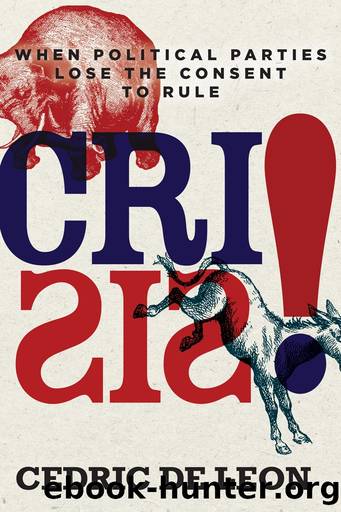Crisis! by Leon Cedric de;

Author:Leon, Cedric de; [Leon, Cedric de]
Language: eng
Format: epub
ISBN: 9781503610651
Publisher: Stanford UP
Published: 2019-09-15T00:00:00+00:00
6
THE MISEDUCATION OF BARACK OBAMA
As if to punish the establishmentâs hubris, postracial neoliberalism unleashed the Great Recession, the worst economic calamity in eighty years. Between May 2007 and October 2009, eight and a half million people lost their jobs, and the national unemployment rate more than doubled from 4.4 to 10 percent. The long-term unemployment rate (among those who could not find a job for twenty-seven consecutive months) was the highest recorded in the postwar period. These numbers had a devastating impact on other areas of social life that are tied to unemployment. The percentage of uninsured people in America increased by one third. The poverty rate increased from 12.5 percent in 2007 to 15.1 percent in 2010, while the wealth of all people plummeted by double digits due to the home foreclosure crisis and the stock market crash.1
Although the negative effects of the Great Recession were widespread, each demographic group suffered differently. Men took the brunt of joblessness relative to women: the decline in employment in 2008 happened mainly in historically male-dominated occupations like construction and natural resource extraction, which experienced a sharp drop of 1.2 million jobs. At the same time, women suffered more than men in the area of housing. One 2015 study found that women were 25 percent more likely than white men to receive predatory âsubprimeâ loans and were foreclosed on at higher rates. The young were poorer than the old: almost a quarter of those aged eighteen to twenty-four lived below the poverty line, whereas a tenth of those aged fifty-five to sixty-four did. People with less education were hit harder than those with more; because of the overlap in education and social class, poorer people took it on the chin while the affluent were relatively unscathed. For example, the unemployment rate for folks who did not graduate high school was 10.6 percent compared to 3.3 percent for those with a college degree. However, of all forms of inequality, oneâs race was by far the most powerful predictor of how well one did during the recession. In late 2008, the unemployment rate for whites, Latinos, and blacks was 6.3, 8.9, and 11.5 percent respectively. Though all groups lost assets in the recession, wealth fell by 16 percent among white households, 66 percent among Latino households, and 53 percent among black households.2
As shocking as some of these numbers might be, none compare to the heartbreaking stories of real people. Poverty became visible again during the Great Recession. Tent cities resembling the Hoovervilles of the Great Depression sprung up across the country from Sacramento, California, to Tampa Bay, Florida. Having lost their jobs and homes, people hung tarps off chain-link fences next to railroad tracks, camped under highway overpasses, and lived on toxic waste dumps where others refused to live. Tammy, a resident of a tent city in Reno, Nevada, told a Guardian reporter, âWe eat things that other people throw out. . . . Itâs really embarrassing to say, but thatâs the way it sometimes is out here.
Download
This site does not store any files on its server. We only index and link to content provided by other sites. Please contact the content providers to delete copyright contents if any and email us, we'll remove relevant links or contents immediately.
The Secret History by Donna Tartt(18087)
The Social Justice Warrior Handbook by Lisa De Pasquale(11941)
Thirteen Reasons Why by Jay Asher(8416)
This Is How You Lose Her by Junot Diaz(6411)
Weapons of Math Destruction by Cathy O'Neil(5801)
Zero to One by Peter Thiel(5463)
Beartown by Fredrik Backman(5308)
The Myth of the Strong Leader by Archie Brown(5217)
The Fire Next Time by James Baldwin(4998)
How Democracies Die by Steven Levitsky & Daniel Ziblatt(4940)
Promise Me, Dad by Joe Biden(4899)
Stone's Rules by Roger Stone(4833)
100 Deadly Skills by Clint Emerson(4663)
Rise and Kill First by Ronen Bergman(4537)
A Higher Loyalty: Truth, Lies, and Leadership by James Comey(4533)
The David Icke Guide to the Global Conspiracy (and how to end it) by David Icke(4361)
Secrecy World by Jake Bernstein(4355)
The Farm by Tom Rob Smith(4306)
The Doomsday Machine by Daniel Ellsberg(4233)
